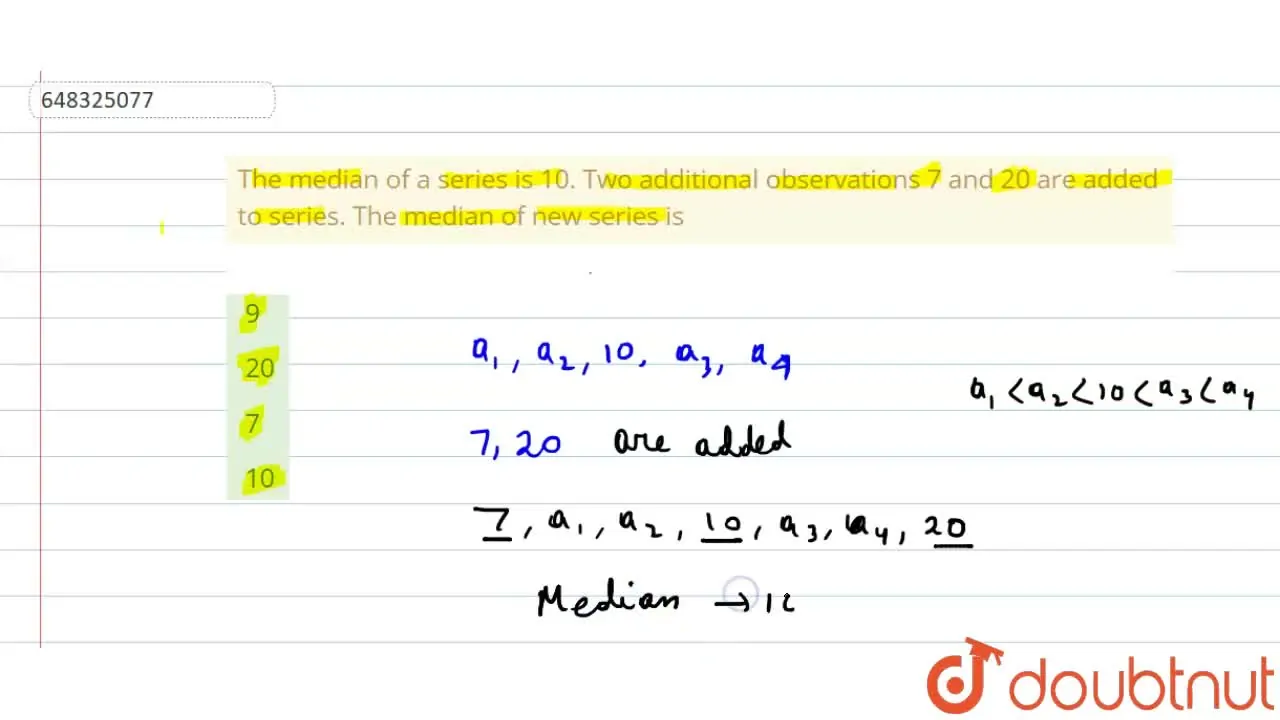The median of a series is 10. Two additional observations 7 and 20 are added to series. The median of new series is
9
20
7
10
The correct Answer is:D
Step by step video & image solution for The median of a series is 10. Two additional observations 7 and 20 are added to series. The median of new series is by Maths experts to help you in doubts & scoring excellent marks in Class 12 exams.
Similar Questions
The median of 21 observations is 18. if two observations 15 and 24 included to the observations, then the median of new series is
View SolutionThe median of a triangle divides it into two
View SolutionThe median of a set of 9 distinct observations is 20.5. If each of the largest 4 observations of the set is increased by 4, then the median of the new set
View SolutionThe wave number of the series limit of Lyman series is -
View SolutionStatement-1 : The median of a set of 9 distinct observations is 20.5. if each of the largest 4 observations of the set Is increased by 2 then median of new set remains the same as that of the original.
Statement-2 : If the variable of a series are arranged in ascending or descending order, then the value of the middle variable is defined as median .View SolutionA collection of data has 12 observation such that no two observations are equal. The median of this data is 15. One number is added to this data collection. The median of the new data is also 15. Find the number that was added.
View SolutionThe median of a set of nine distinct observations is 20.5. If each of the last four observations of the set is increased by 2, then the median of the new set is
View SolutionThe median of a set of nine distinct observations is 20.5. If each of the last four observations of the set is increased by 2, then the median of the new set is
View SolutionThe median of 11 observations is 10. The number of possible observations in the data which are less than 10 is 5 (b) 6 3 (d) 10
View SolutionThe median of the 10 different observations is 46. If the observation 70 is replaced with 100 then the new median is _________
View Solution


